Looking for the best things to do in Trieste, Italy? From literature to architecture and world-famous coffee, this surprising Italian city has a character all of its own.
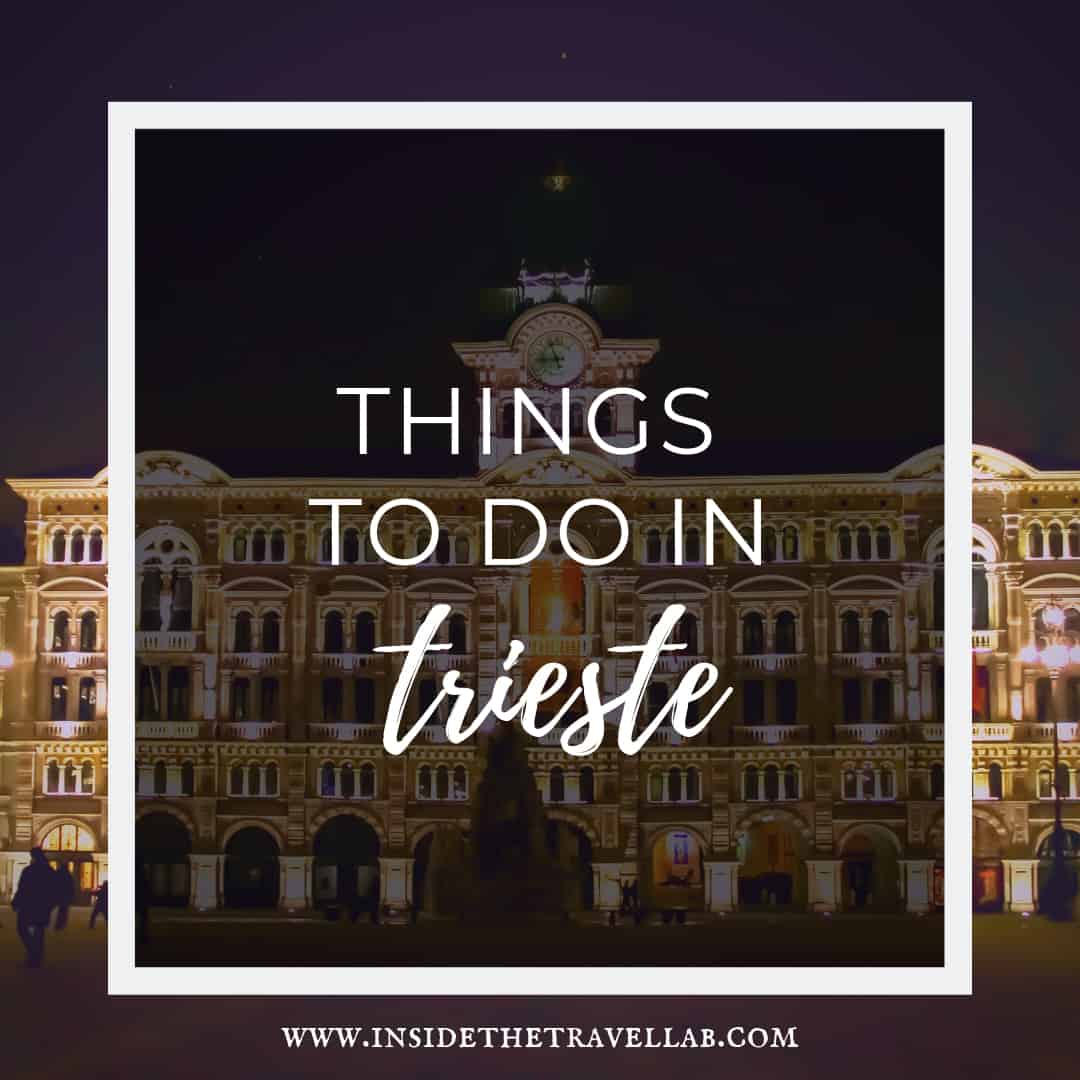
Why Visit Trieste?
Trieste is not like the rest of Italy. Perched on the border with Slovenia, it’s a mix of Italian flair and Balkan practicality. But it’s a beautiful place and one I’d highly recommend visiting.
It was winter when I arrived in Trieste. The wind carried with it the whisper of sleet and the soft scent of snow. The ground sparkled with the reflections of Christmas lights in the afternoon rain and the central square was surprisingly quiet.
I was here on my Iron Route project, a journey from Istanbul to Berlin that zig-zagged across the former Iron Curtain. And Trieste was a key part of that.
For more about that, read on to the end of the article.
In the meantime, let’s talk about some of the best things to do in Trieste.
Recommended reading: what you need to know about the Ravenna Mosaics and the surprise you’ll find in Comacchio
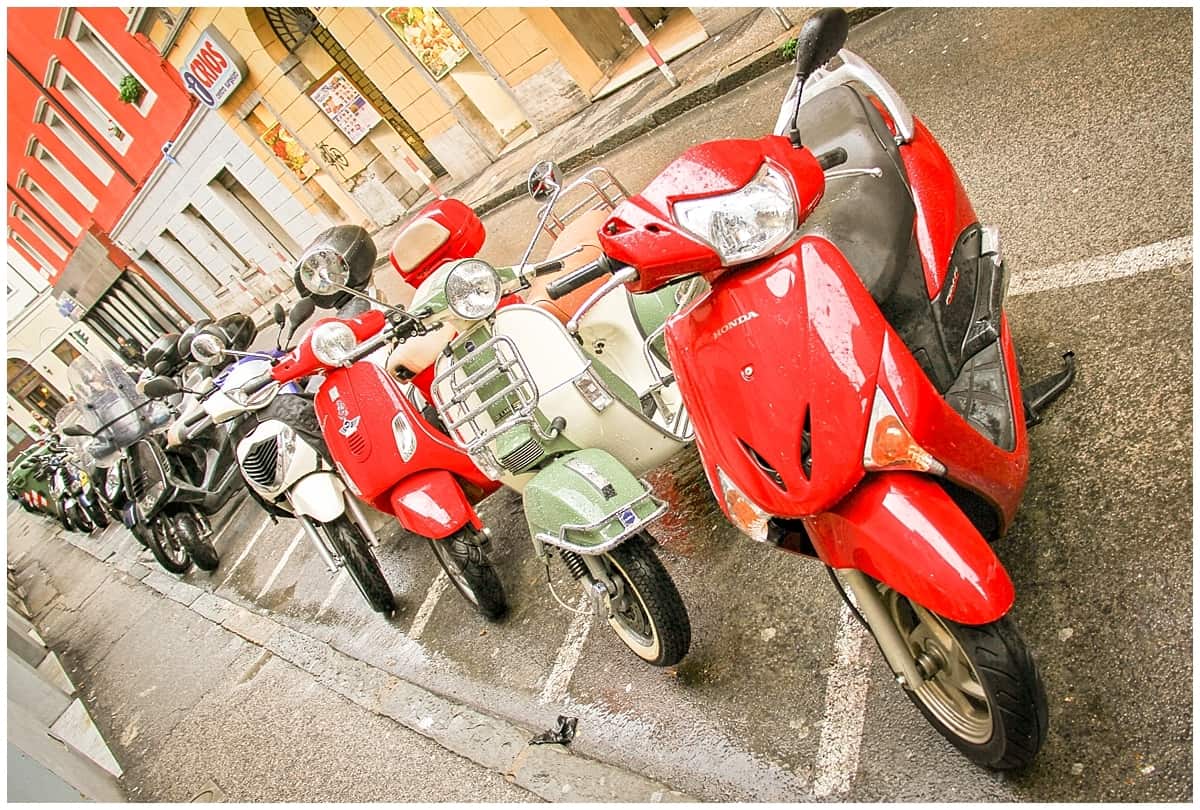
Where is Trieste?
Trieste is the capital of the Friuli Venezia Giulia region in northeast Italy. It sits on the border with Slovenia and used to be the main port of the Austro-Hungarian Empire. It’s just a short train ride from Venice and the main connection point from Italy to Ljubljana.
The Best Things to Do in Trieste, Italy
Walk Around Town
Start at the waterfront and follow the waterways in and back to the Adriatic. Climb hills. Meander in coffee shops without a plan at all. Look up at grand facades and out again to the sea. Walk the Molo Audace and transport yourself 200 metres over the water.
The best thing to do in Trieste is to explore with your feet – and with your stomach.
Inside Tip: head to the waterfront and walk around the old part of town without a plan. Coffee. Cake. Walking. All good, so good.
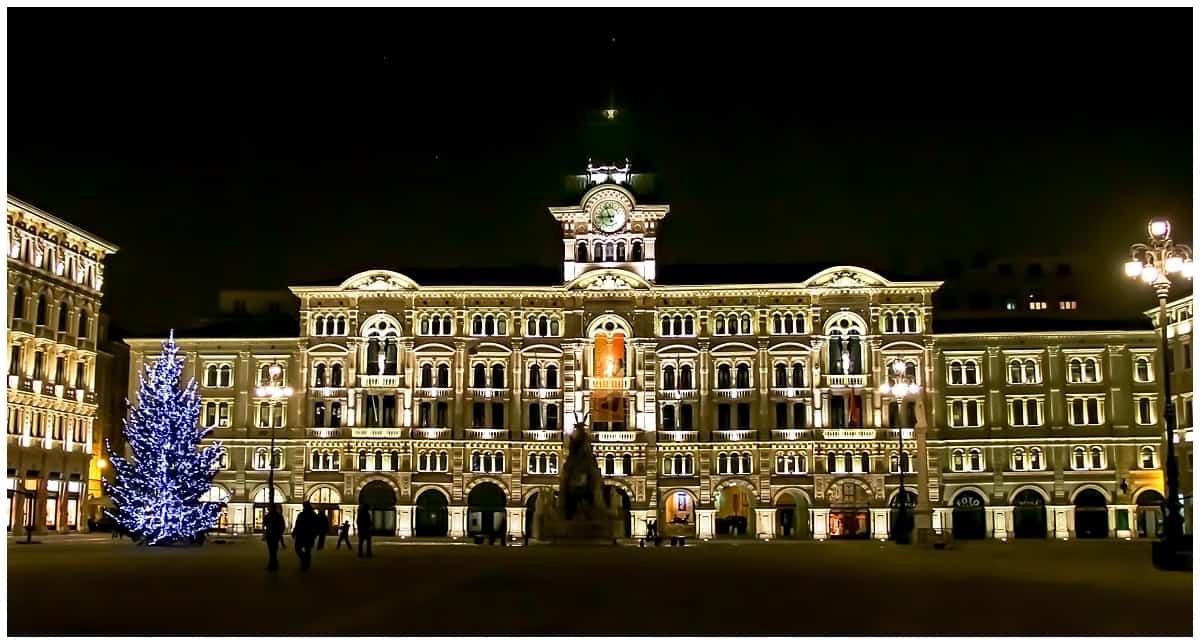
Piazza D’Unità D’Italia
Combining the grandeur of Vienna with that of ancient Rome, the Piazza d’Unità d’Italia throws in one more punch: one side of the square opens entirely to the Adriatic Sea.
Inside tip: visit at night.
Sapphire lights stud their way across the stone as flames from an occasional car streak across the empty velvet sky, backlit by the brilliance of a long forgotten empire.
The Adriatic looks black, dark, empty, silent. All you can hear is the sound of water touching the stone.
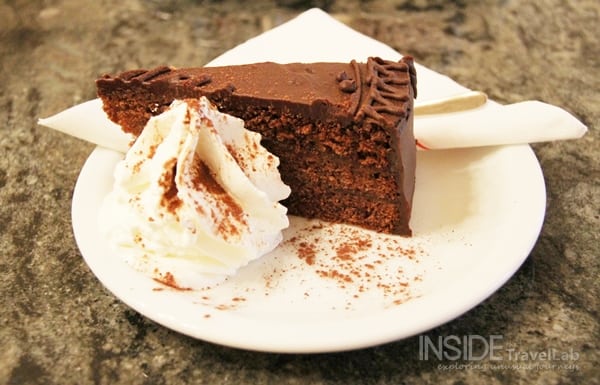
Caffe Tommaseo: The James Joyce Haunt
Mixing all the romance of Vienna’s coffee shops with Dublin’s literary history is the Caffe Tommaseo, a cosy spot that serves a lot of cream with its coffee.
All polished wood and cream with a smoky, old fashioned feel, it’s the exact antithesis of the bright white, ceramic tiled hipster coffee bar of today.
It opened in 1830 and claims to be Trieste’s oldest cafe still in operation.
Overlooking the sea and notching up an impressive pedigree of Italian creatives in its day, it’s one of those literary spots I love to sit and soak up some inspiration (And cake. And coffee).
Where to find it: Piazza Nicolò Tommaseo, 4, 34122 Trieste
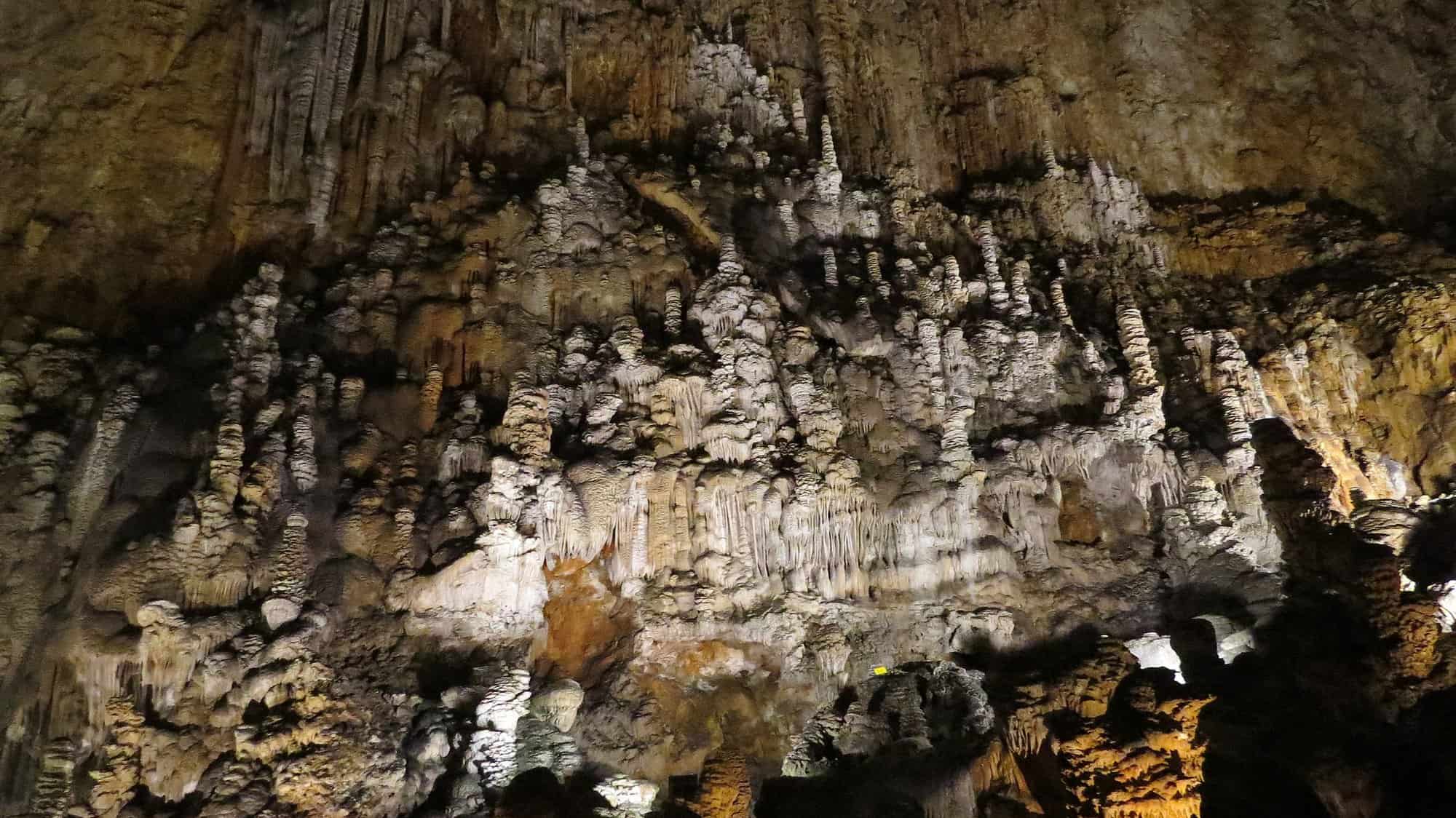
Hike the Carso and the Grotta Gigante
The steep limestone plateau that surrounds Trieste had a grisly role in its past, as authorities purged unwanted people by throwing them into the karst.
Today, it has a happier function: as a meeting place for hiking and walking off any excess cake.
The easiest route is the Strada Napoleonica which leads to the small village of Prosecco (yes, that Prosecco, although production now takes place to the west.)
The large Grotta Gigante – or giant cave – produces stalactites and stalagmites with all the necessary razzle-dazzle, even though it lost its Guinness World Record as the world’s largest show cave to another one in France.
Inside tip: take bus no 4 from the centre to start the hike to Prosecco.
Chill Out in a Former Psychiatric Hospital
The Posto delle Fragole, or strawberry patch, is a restaurant, bar and cultural centre surrounded by parkland in Trieste. But it used to be the city’s psychiatric hospital.
Trieste was the first Italian city to end the forced incarceration of people with mental illness and students now throng here, mingling between the buttery yellow walls. In summer, I’m told concerts take place between the rose gardens.
Inside tip: bus 12 from the city centre will whiz you along to the rose gardens and park.
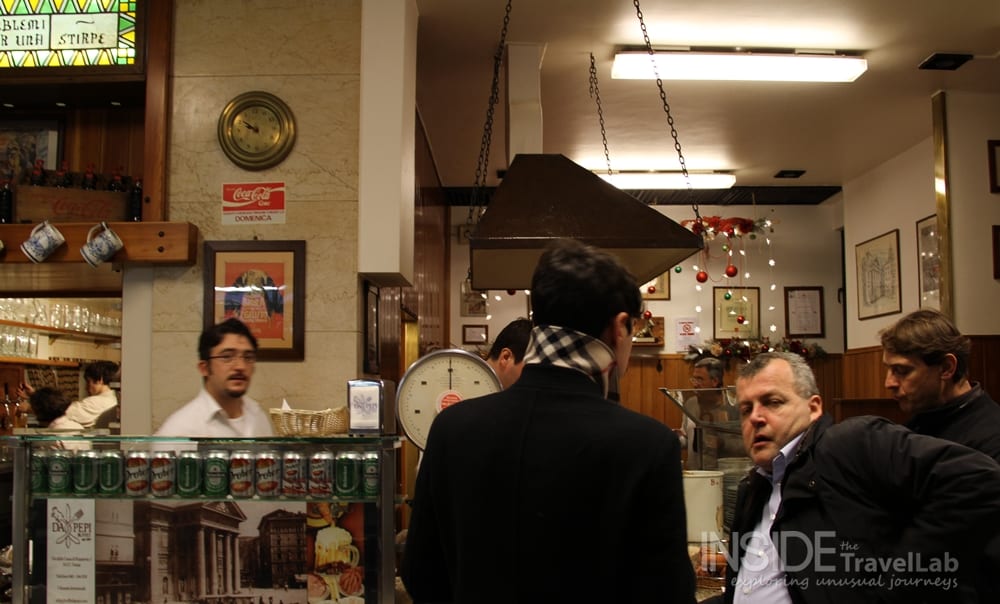
P-O-R-K! Stand and Eat at a Buffet
Besides the stunning waterfront architecture, the best thing for me about Trieste was understanding her history through her food. So much so, I wrote a whole article about Trieste cuisine in particular.
The switch from Austro-Hungary to Italy has never been more evident than on a plate.
And the most striking example, particularly if you’re more used to the Italian side of the menu, is the Buffet experience.
Casual yet sacrosanct, it’s a style of eating where everyone rubs shoulders with everyone else and huge hunks of ham and pork legs are sliced into mustard-rich platters. This isn’t the cured, slender, parma ham world.
It’s the chunky, juicy, slabs of meat with sauerkraut world. And it’s delicious!
Inside tip: Visit Buffet da Pepi on Via della Cassa di Risparmio, 3, 34121 Trieste for the real deal.
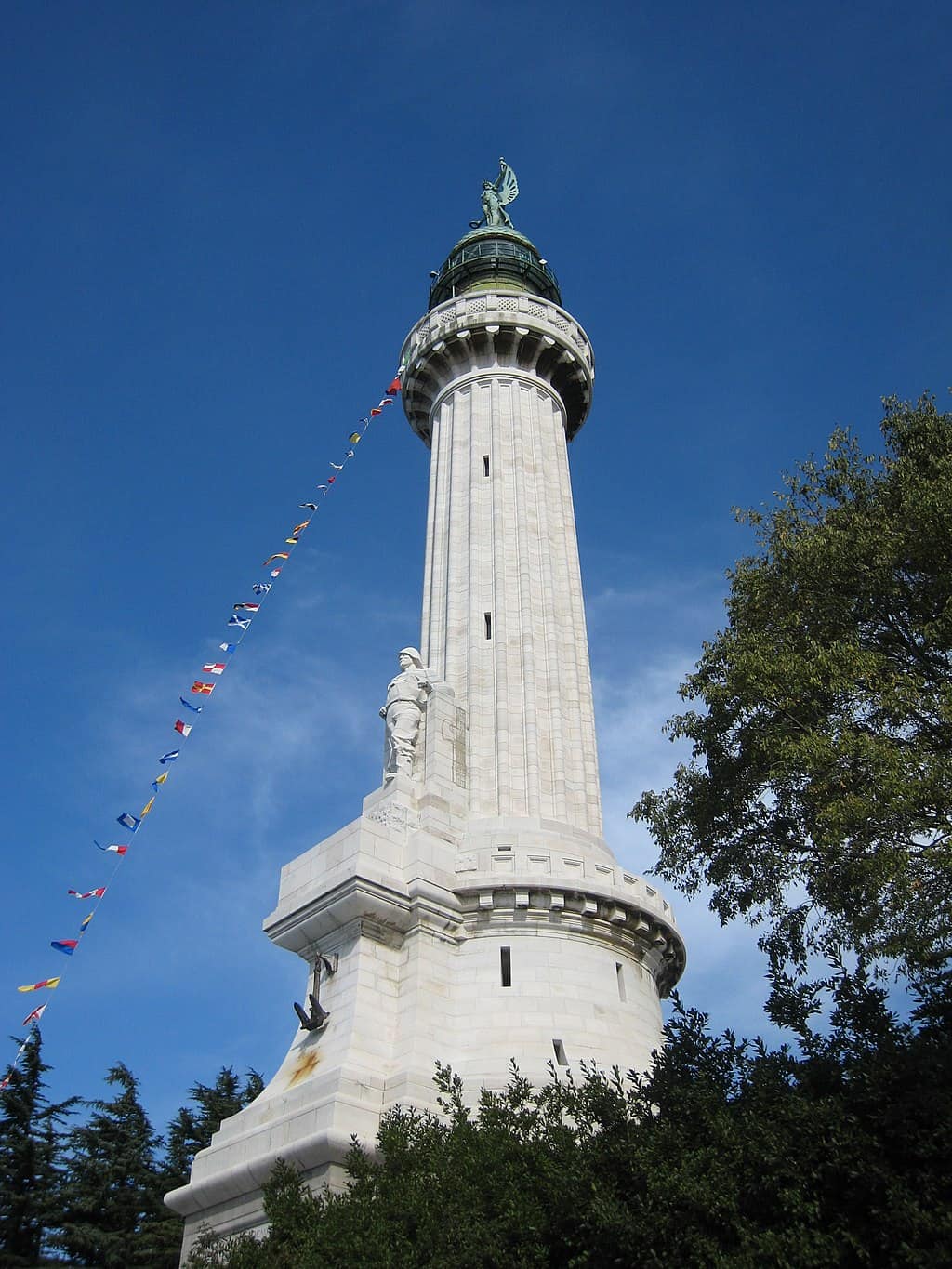
To the Lighthouse
To add a bit of structure to your walk, head to the lighthouse or Faro della Vittoria. The 70 metre structure has all the hallmarks of empire building and glory but it’s come to represent a symbol of liberty for the people who live here.
Although run by the navy, it’s open to the public and promises panoramic views across to Slovenia and Croatia. And it provides a view that bound families together during the political separation.
Inside tip: find the lighthouse on Gretta Hill on the foundations of Austrian fort Kressich.
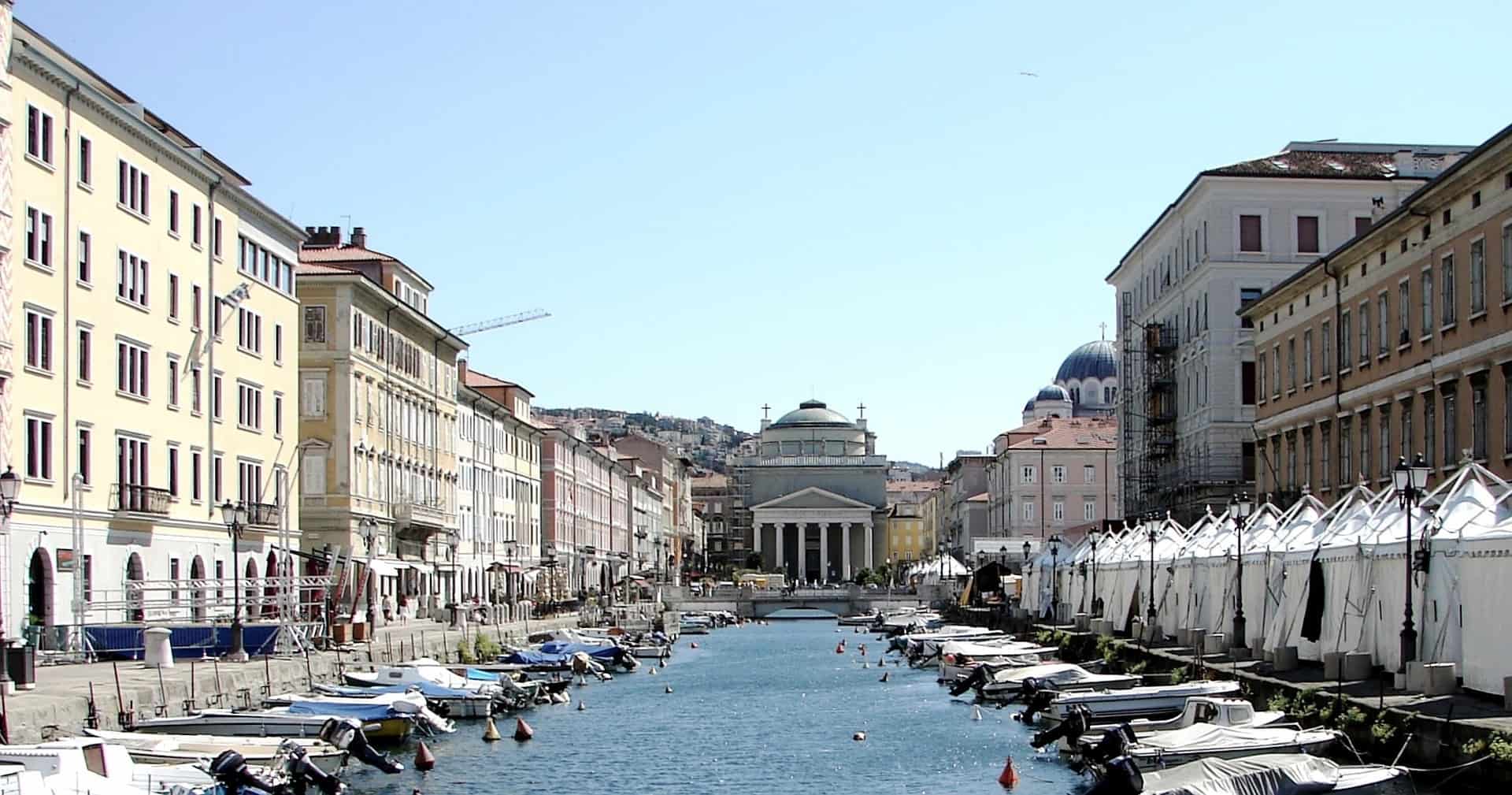
The Canale Grande
You wouldn’t think it to look at it, but this impressive waterway stands on the ground of reclaimed salt marshes. Built in the 18th century, the canal was a key part of reinventing the city. And while it lacks the iconic grandeur of Venice, it gains a sense of authenticity. You won’t find Trieste crowded out with tourists.
Inside tip: look out for the James Joyce statue.
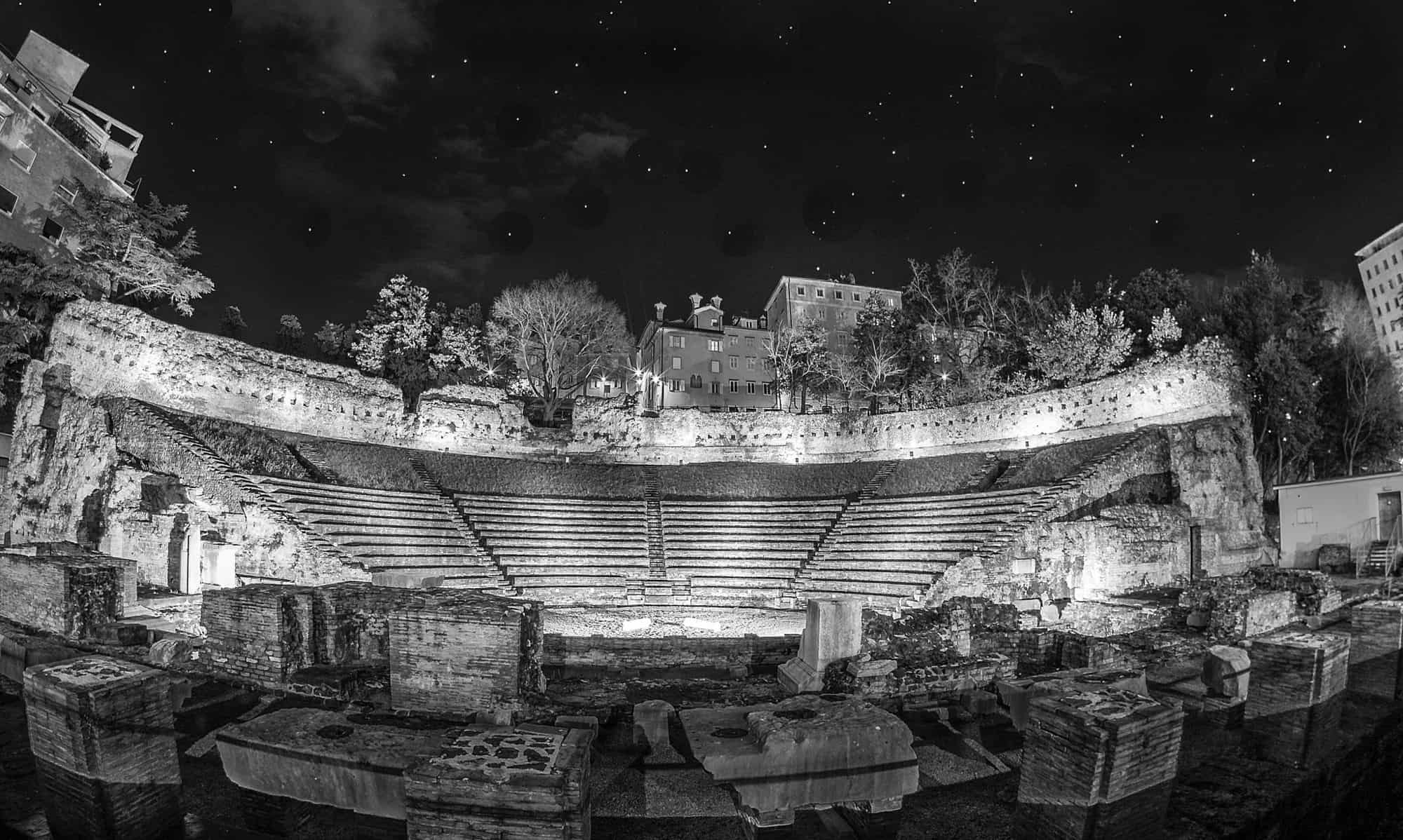
Visit the Roman Theatre
Right in the heart of Trieste lie the ruins of a Roman Theatre or the Teatro Romano. A reminder, if one were needed, that this crossroads of Europe has changed hands many times.
It’s a beautiful spot for a concert or short walk around but if you’re short on time, it may be one to skip (particularly if you’ve been to Rome lately.)
Inside tip: a spot to skip if you’re short on time and have recently had your fill of Roman ruins.
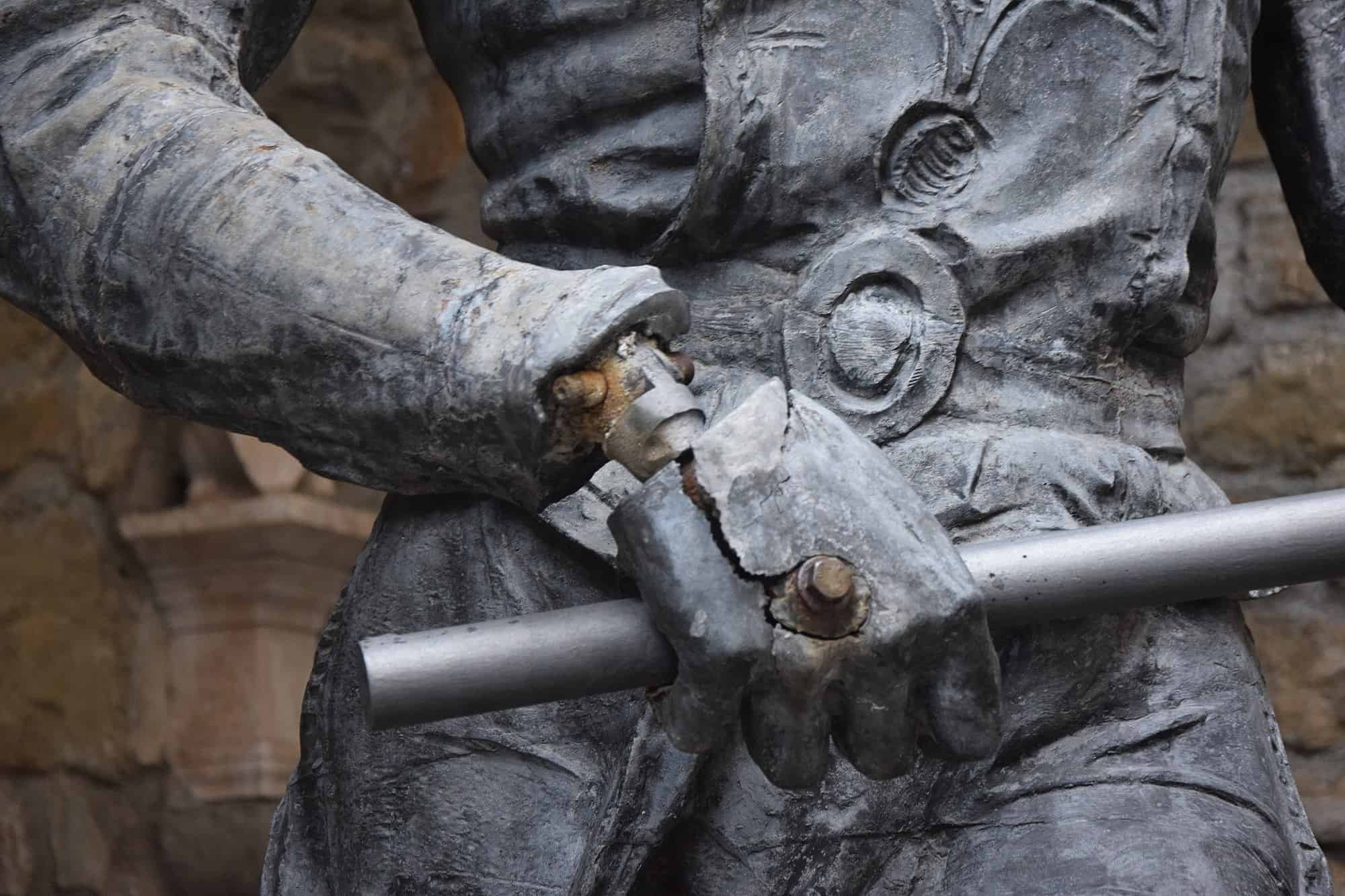
San Giusto Castle
It’s a steep old hill that leads to San Giusto Castle, as befits a spot for fortification. Even before the Romans arrived on this part of the Adriatic coast, this part of the city was involved in defence.
The current castle, built in 1468 by Austria, never needed to sully its hands with the mucky business of actual military campaigning. And so it still stands today.
Inside tip: again, save your time if needs be for the coast.
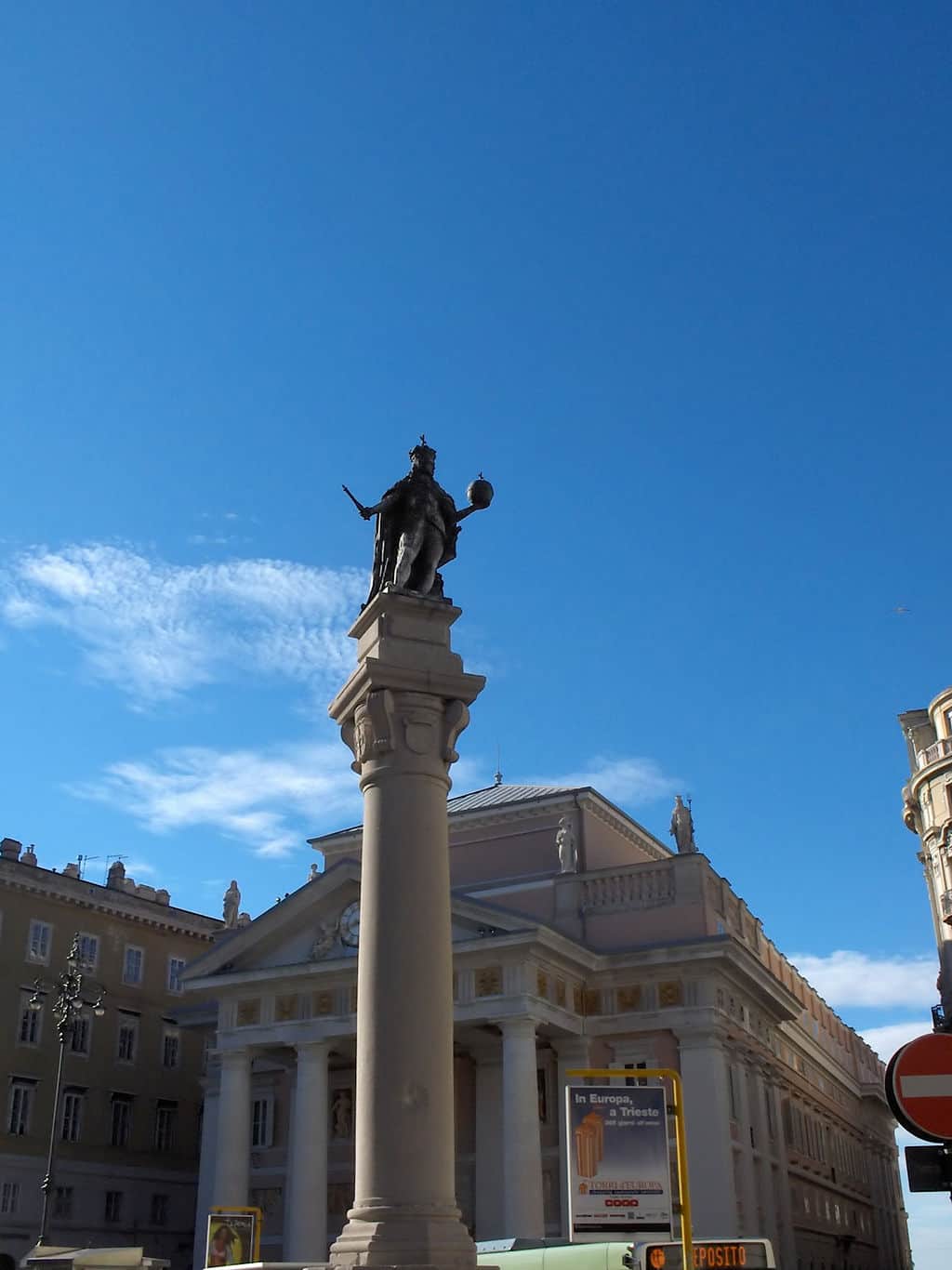
Piazza della Borsa
And so we return to the grandeur of Trieste in Piazza della Borsa, close to Piazza d’Unità d’Italia. The columns of the Chambers of Commerce. The grand facades of the square. The pedestrian area now a mix of work, play and dreamy looks back at history.
Inside tip: Pull up a chair and have a coffee. It’s not just because I’m tired. This is coffee success story “Illy’s” homeland, don’t you know?
Day Trips From Trieste
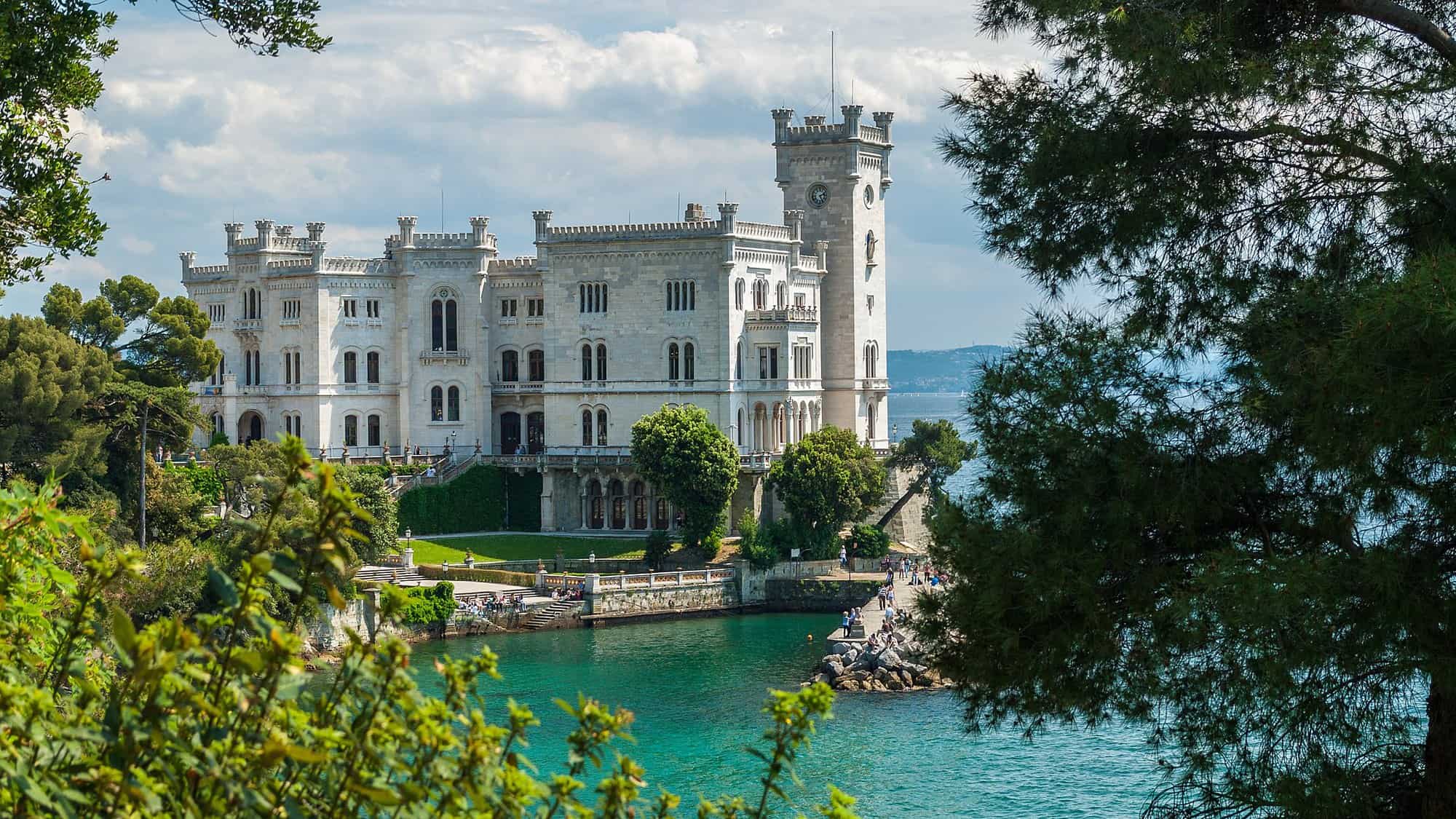
Miramare Castle
Once a royal residence, Miramare Castle juts out into the Adriatic, just ten minutes by public transport from the centre of Trieste. As a mix of stern stone and whimsical swirls, it’s an interesting look at the changing seat of power during the 19th and 20th centuries.
Did you know: during World War Two, New Zealand, British and American troops used the castle as military headquarters.
The Postojna Caves
Cross into Slovenia and delve into one of the largest caves open to visitors in the world. I’ve not used this particular tour company but have heard good things about this day trip to Postojna from Trieste.
The History of Trieste
The Habsburgs
The Habsburgs (in case, like me, you never covered any of this in school) ran and oversaw an empire that stretched from Holland to the subsequent USSR and lasted for more than 600 years.
100 years after their demise, hardly anyone knows who they are. Today’s grandchildren never knowing there was a Queen of England.
Trieste formed the Habsburgs’ 4th largest city, right behind Vienna, Budapest and Prague.
World War One began with the assassination of the heir to the Habsburg throne. And as World War One ended, so did the Habsburgs.
The Border Change
A victorious Italy moved into Trieste, Slovene names were switched to Italian and the decades that followed involved ongoing border disputes, forced Italianization, Nazi occupation, the decimation of the Jewish population and the formation of the only concentration camp on Italian soil.
Landing on the losing side once again, at the end of the Second World War, Trieste “belonged” to the Allied Forces. Its territories were split once more and within a few years it settled into the borders it uses today, snug against what used to be western Yugoslavia, and what is now 21st century Slovenia.
And, according to Churchill’s speech in 1946, at the edge of the Iron Curtain.
“From Stettin in the Baltic to Trieste in the Adriatic, an iron curtain has descended across the Continent. ” Churchill 1946
More On Italy
- The Italian landmarks for your Italy bucket list
- How to get off the beaten path in Italy with 101 hidden gems
- What to buy in Italy: your guide to Italian souvenirs
- The best Italian themed gifts for people who love Italy
- How to make a real ragu: the traditional Italian dish you can make at home
- 31 hidden gems in Tuscany
- How to get off the beaten path in Venice
- What you need to know about the Ravenna Mosaics in Italy
- The surprise you’ll find in Comacchio
- 21 unusual things to do in Rome to escape the crowds
- 41 fun facts about Sicily
- When is the best time to visit Venice to avoid the crowds?
- The candle festival in Malta and why it is so special
This article forms part of a series for #ironroute, a journey by train from Istanbul to Berlin. This took place thanks to the sponsorship, freedom and encouragement of InterRail. A version of this article was first published in 2011.

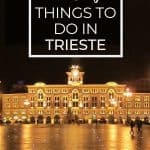
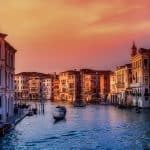
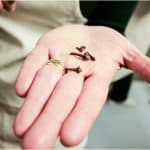


Have you read ‘Trieste and the Meaning of Nowhere’ by Jan Morris? She often wrote about Trieste and lists it as her favourite city.
No – or at least not yet. I will add it to my list, though as the city has such an interesting past.
Agree. It’s a great read. Jan Morris also included Trieste in her 1980 book “Destinations”(Essays from Rolling Stone).